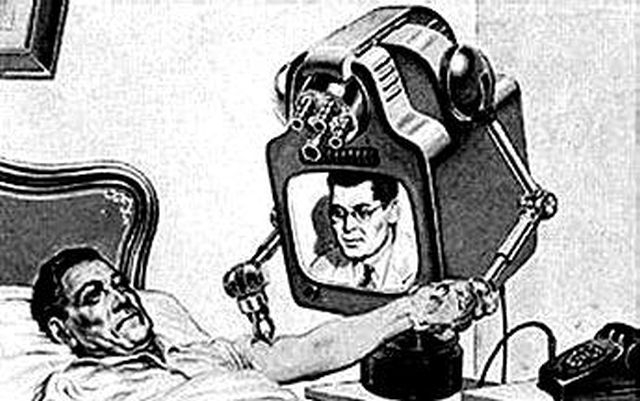Exactly How to Discover Trustworthy Teledoctors for Your Clinical Requirements
Exploring the Benefits and Challenges of Teledoctors in Modern Health Care
As the healthcare landscape evolves, teledoctors have actually emerged as a crucial part in connecting voids in medical accessibility and efficiency. Just how can the health care market balance these benefits with the inherent difficulties?
Expanding Accessibility to Care
Telemedicine has become a crucial development in modern-day healthcare, substantially expanding access to take care of varied populations. By leveraging digital innovation, teledoctors have actually changed the conventional health care distribution version, making it possible for clients in underserved or remote locations to receive timely medical assessment. This development is especially advantageous for individuals residing in rural neighborhoods, where the deficiency of medical care facilities and specialists commonly brings about postponed or poor treatment.
Teledoctors contribute in connecting the void developed by geographical obstacles. Via digital consultations, clients can access a variety of health care services without the requirement for considerable travel. This is particularly valuable for those with flexibility concerns or persistent problems needing regular medical attention. Furthermore, telemedicine enhances continuity of treatment by making it possible for normal follow-ups and surveillance, therefore boosting individual outcomes.
The combination of teledoctors into health care systems also sustains the administration of public health and wellness crises by promoting fast reaction and triage. During pandemics, as an example, online consultations lower the problem on physical healthcare centers, reducing direct exposure risks for both patients and doctor. As telemedicine remains to advance, it guarantees to improve the landscape of healthcare access, making it much more comprehensive and effective.
Cost-Effectiveness of Teledoctors
The cost-effectiveness of teledoctors is a considerable variable driving their prevalent fostering in healthcare systems. By lowering the need for physical infrastructure and in-person sees, teledoctors supply an even more budget friendly alternative to standard health care distribution.
Moreover, teledoctors facilitate a more efficient use healthcare sources by minimizing unnecessary emergency clinic gos to and health center admissions. People can access prompt examinations for minor ailments or follow-up care, which helps to alleviate the burden on overstretched medical care centers. This performance not only causes set you back financial savings for health care suppliers however likewise reduces the financial strain on people that might otherwise encounter costly healthcare facility costs.
Additionally, teledoctors can help in handling persistent illness a lot more efficiently by offering regular tracking and timely treatments. This positive approach can protect against problems, thus reducing lasting treatment prices. Generally, teledoctors present a sensible option to the escalating expenses of healthcare, while keeping quality treatment delivery.
Enhancing Individual Convenience
While cost-effectiveness plays a crucial role in the rise of teledoctors, improving individual ease stands as another compelling advantage of this health care design. With the assimilation of teledoctors, people can bypass the traditionally time-consuming process of scheduling and attending in-person visits.
Moreover, teledoctors use flexible scheduling, permitting people to organize appointments at times that see finest match their specialist and individual commitments. This versatility is invaluable for individuals balancing requiring job schedules or household duties, making certain that health care can be incorporated seamlessly into their lives. Furthermore, the capacity to accessibility doctor from the convenience of one's home can lead to enhanced client interaction and adherence to therapy strategies, as the obstacles to looking for treatment are lowered.
The convenience provided by teledoctors not only improves the individual experience yet also contributes to an extra reliable and receptive medical care distribution system, inevitably sustaining far better health and wellness end results.
Resolving Privacy Concerns
Amid the growing adoption of teledoctors, personal privacy worries emerge as a substantial factor to consider. As health care progressively counts on electronic platforms, guaranteeing the confidentiality of patient information comes to be extremely important. The digitization of medical records and the use of telecommunication technologies demand durable safety procedures to shield sensitive information from unauthorized gain access to and breaches.
Doctor should follow rigorous guidelines, such as the Medical Insurance Transportability and Responsibility Act (HIPAA) in the United States, which develops national standards for guarding medical information. Conformity with such policies is crucial in keeping individual count on and guaranteeing their data is handled properly. Encryption of information, protected communication networks, and regular audits are several of the procedures that can be executed to enhance information protection.
Cybersecurity risks are progressing, and medical care organizations should continue to be alert to brand-new susceptabilities. Additionally, informing both individuals and medical care service providers regarding ideal techniques in information personal privacy is necessary.
As teledoctors become a lot more integral to healthcare shipment, addressing privacy concerns is necessary to make sure both the efficiency and reliability of these solutions.

Navigating the Digital Divide
Connecting the electronic divide is a critical challenge in the extensive adoption of teledoctors. teledoctors. This divide includes disparities in access to electronic modern technology, specifically amongst country, low-income, and senior populaces. These teams frequently lack the necessary devices, reputable web connectivity, or digital literacy required for effective participation in telehealth services. Consequently, the benefits of teledoctors-- such as increased accessibility and convenience-- remain inaccessible for several people that might most the original source take advantage of them.
Initiatives to reduce this divide necessitate a multi-faceted approach. Policymakers have to focus on facilities development to boost internet access in underserved locations. Furthermore, initiatives to support modern technology for low-income families can play an essential role in ensuring fair gain access to. Health care suppliers and neighborhood organizations need to work together to offer electronic literacy programs, encouraging individuals to navigate telehealth systems confidently. In addition, creating user-friendly user interfaces can further boost availability for all demographics, especially the elderly.

Conclusion
The assimilation of teledoctors into contemporary health care offers significant benefits, consisting of raised access to care, cost-effectiveness, and enhanced patient comfort. However, difficulties such as personal privacy concerns, the digital divide, and cybersecurity hazards should be resolved to take full advantage of these benefits. By implementing robust information protection steps, enhancing electronic literacy, and guaranteeing safe technical framework, the potential of teledoctors can be completely recognized, advertising fair healthcare delivery and transforming the health care experience for all people.
